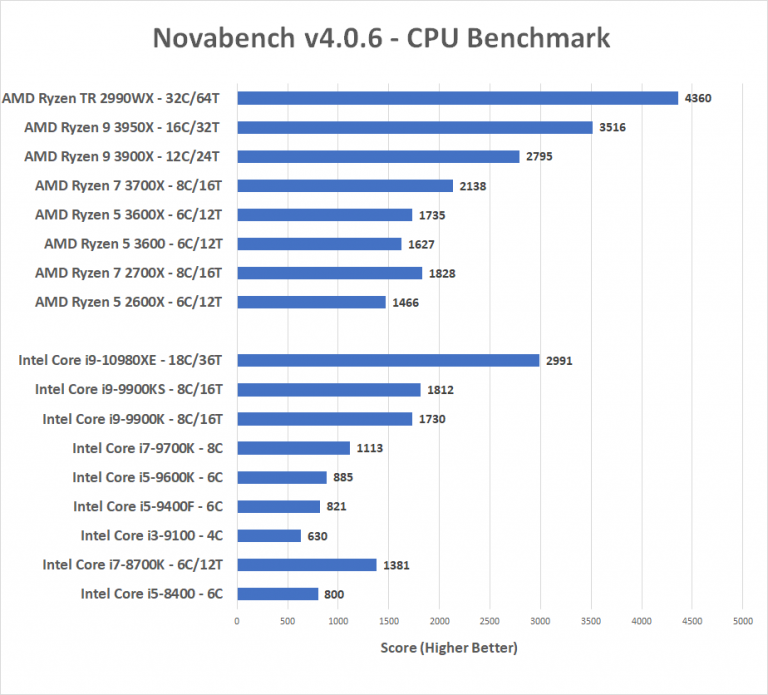

- MAJOR REASONS FOR SLOW NOVABENCH SCORE DECLINING DRIVER
- MAJOR REASONS FOR SLOW NOVABENCH SCORE DECLINING WINDOWS 10
- MAJOR REASONS FOR SLOW NOVABENCH SCORE DECLINING SOFTWARE
That’s a long way of saying that results between these two articles aren’t necessarily comparable. We further added some games that were requested ( Fortnite, Overwatch) and removed a few games that couldn’t reach reasonably playable frame rates on this hardware ( Far Cry 5, F1 2018). So, aside from a few built-in benchmarks, we now report average frame rate and average, 99th percentile, and 99.9th percentile frame times. Reader feedback requested instead a focus on frame times, which is understandable in any case, but especially with lower power graphics. Our initial Ice Lake benchmarks reported minimum, maximum, and average frame rates. It’s also worth noting that for some tests, specifically games, we’re using a different testing method.
MAJOR REASONS FOR SLOW NOVABENCH SCORE DECLINING DRIVER
Therefore, all tests for this article were run with the latest Windows, system firmware, and driver updates as of September 12, 2019. Since we were adding the Whiskey Lake system into the mix, and considering the reader feedback we received on the type of benchmarks we included, we chose to simply retest everything on the latest updates.
MAJOR REASONS FOR SLOW NOVABENCH SCORE DECLINING WINDOWS 10
Both our Dell and Lenovo test systems received Windows 10 updates, and both Intel and AMD released graphics driver updates.
MAJOR REASONS FOR SLOW NOVABENCH SCORE DECLINING SOFTWARE
Shortly after the release of that article, several software and driver updates were released. Picasso Benchmarksįirst, a quick note for those who read our initial coverage on the Ice Lake benchmarks. We’re also once again including the Ryzen 7 3700U, not only to compare Intel’s and AMD’s top currently available 15W platforms, but also to better understand the state of the market for low power integrated graphics prior to Ice Lake’s launch, since AMD’s Picasso-based systems have been on the market since the beginning of the year. Our goal is to compare the generation-over-generation performance of Intel’s top mobile processors in the 15W TDP category, with a specific focus on graphics. So we set out to test this claim as well by picking up a Whiskey Lake-based system powered by the top processor from that generation, the Core i7-8565U. While the 3700U’s Vega 10 GPU still led in several games and applications, the Iris Plus Graphics were very close in performance, if not ahead in some categories.īut Intel made another, related claim prior to Ice Lake’s launch: that Gen11 graphics would be up to twice as fast as the “Gen9” UHD 620 graphics found in the preceding Whiskey Lake platform (“Gen10” graphics, which would have made their debut on Intel’s semi-aborted Cannon Lake platform, were never productized). The results for Gen11 Iris Plus Graphics were impressive. We tested that claim earlier this month by comparing the first shipping Ice Lake system, the Dell XPS 13 2-in-1 with the top-end i7-1065G7, to a Lenovo ThinkPad T495 powered by AMD’s top processor in that same 15W TDP category, the “ Picasso”-based Ryzen 7 3700U. Intel claimed that this new graphics architecture – now officially named “Iris Plus Graphics” – would significantly close the gap with, or even exceed in some cases, AMD’s Ryzen mobile graphics in the same power range. In the lead up to the launch of its new Ice Lake platform, Intel frequently touted the improved “ Gen11” integrated graphics that would be making their debut in the 10nm mobile processors. We test Intel’s claim that Ice Lake graphics are up to twice as fast as last year’s Whiskey Lake

We test Intel’s claim that Ice Lake graphics are up to twice as fast as last year’s Whiskey Lake.


 0 kommentar(er)
0 kommentar(er)
